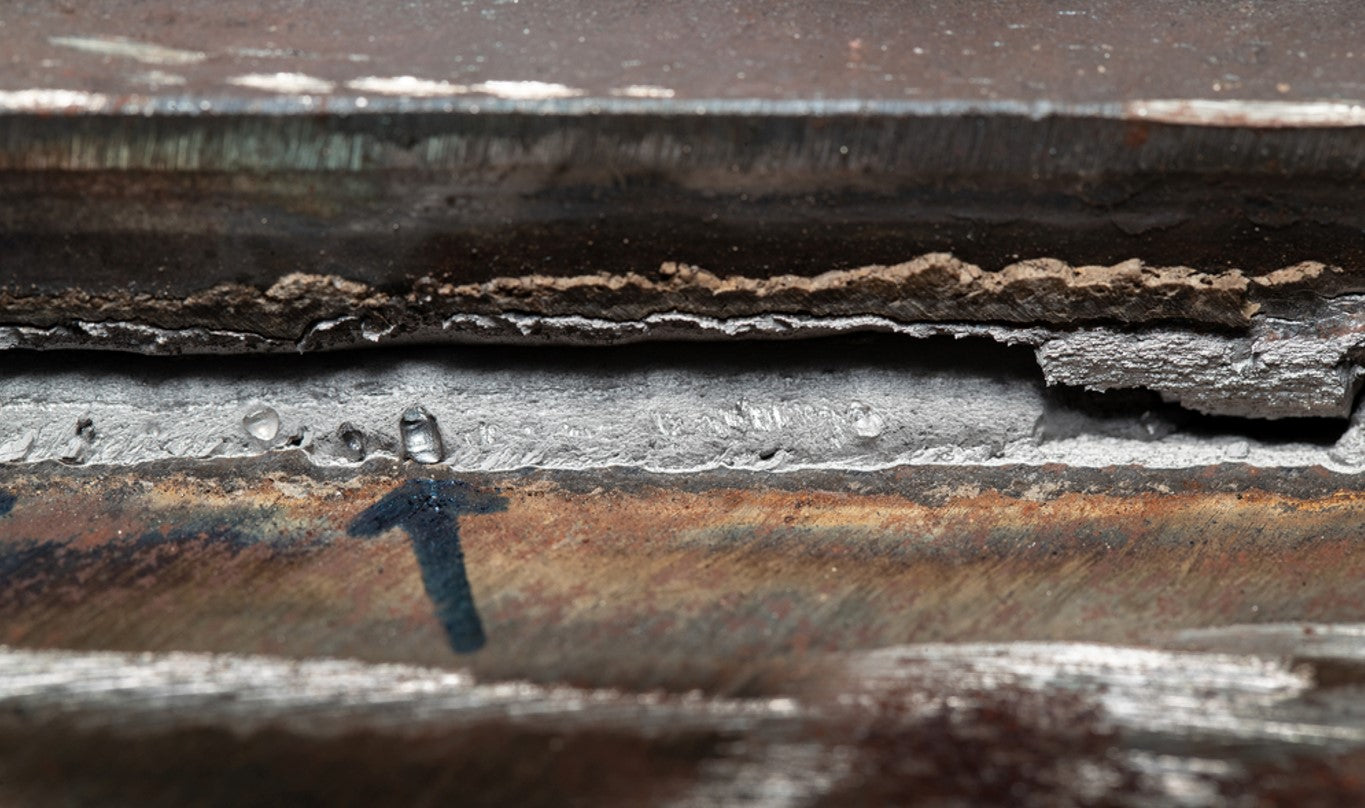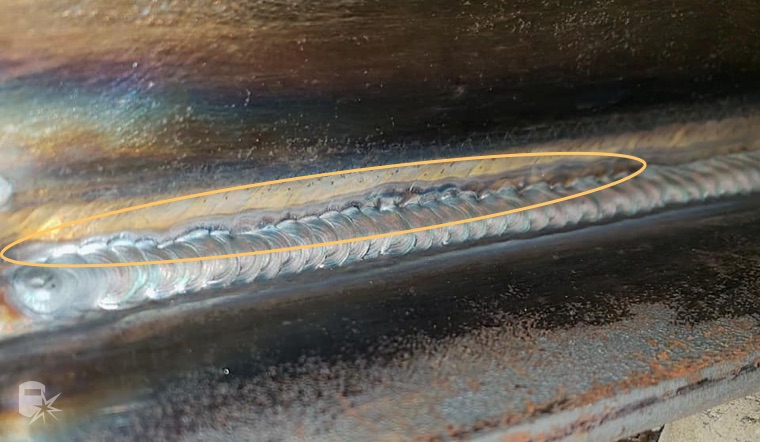Preventing Weld Undercut: Proven Methods Every Welder Ought To Know
Preventing Weld Undercut: Proven Methods Every Welder Ought To Know
Blog Article
Important Tips for Welders: Preventing Undercut Welding and Ensuring Stronger Weld Joints
In the realm of welding, accomplishing solid and durable weld joints is the keystone of generating top quality work. However, one typical difficulty that welders usually encounter is undercut welding, which can compromise the integrity of the weld joint. By understanding the elements that contribute to undercutting and executing the right methods and safety measures, welders can successfully stop this problem and make sure the long life and toughness of their welds. Allow's check out some necessary ideas that can assist welders navigate this difficulty and raise the quality of their welding projects.

Recognizing Undercut Welding
Undercut welding is a common welding issue that happens when the weld steel stops working to effectively fill up the groove and causes a groove-like anxiety along the weld grain. This problem damages the weld joint, making it vulnerable to fracturing and failure under anxiety. Undercutting can be triggered by numerous elements, consisting of excessive welding present, high welding rate, improper electrode angle, inaccurate electrode size, and bad welding strategy.
One of the primary factors for undercut welding is an inequality between the welding present and the welding rate. If the welding current is too expensive or the welding speed is also quickly, the weld metal may not appropriately fill the groove, causing damaging. In addition, using an electrode that is as well big can cause a comparable outcome, as the excess metal can not appropriately move right into the groove.
To avoid undercut welding, welders ought to guarantee they are making use of the proper welding parameters, maintain a suitable electrode angle, choose the ideal electrode size, and technique proper welding methods. By addressing these elements, welders can minimize the threat of damaging and develop more powerful, more dependable weld joints.
Appropriate Welding Method
Efficient welding method plays a critical duty in making certain the top quality and honesty of weld joints. Correct welding strategy entails a mix of skill, accuracy, and adherence to best practices. One basic facet of appropriate welding method is preserving the appropriate angle and distance in between the welding weapon and the work surface. Welders need to likewise pay close attention to the travel rate and warm input to stop concerns like damaging, porosity, or insufficient combination.
Furthermore, a consistent and constant hand activity is vital for creating solid and resilient weld joints. Welders should go for smooth, uniform activities to guarantee also distribution of the weld product. Appropriate adjustment of the welding gun and filler product is likewise key to accomplishing optimal infiltration and fusion.
Moreover, controlling the warm input and picking the proper welding criteria based on the product being welded are important elements in attaining top quality welds - Preventing weld undercut. Welders need to follow the advised settings supplied by welding treatment specifications and change them as required based on the particular requirements of the job. By grasping proper welding methods, welders can substantially improve the toughness and integrity of their weld joints
Picking the Right Electrode
When taking into consideration the importance of selecting the ideal electrode in welding applications,Keeping the proper angle and distance between the welding gun and the workpiece is essential. The choice of electrode plays a critical role in identifying the high more tips here quality and stamina of the weld joint. Electrodes are available in different kinds, each created for details objectives and products.
To start with, picking the ideal electrode size is essential. Thinner electrodes are suitable for welding thin products, while thicker electrodes are much better for thicker products and greater warm applications. Matching the electrode diameter to the thickness of the workpiece helps achieve a well balanced weld.
Second of all, recognizing the product make-up of the electrode is essential. Various electrodes are created for welding certain products like steel, stainless steel, aluminum, or cast iron. Using the correct electrode material ensures excellent blend and lessens the danger of problems in the weld.
Lastly, considering the welding position and strategy is critical when selecting the electrode type. Particular electrodes are much better suited for upright or above welding placements, while others work well for flat or straight positions. Picking the ideal electrode based on the welding strategy improves the overall weld top quality and stability.
Preparing the Base Metal
To make certain a successful welding procedure, what preliminary steps should be taken when preparing the base steel for welding? Properly preparing the base steel is important for achieving long lasting and strong weld joints. The initial step in preparing the base steel is to clean it extensively to remove any kind of contaminants such as corrosion, paint, dirt, or oil. This can be done using a cord chemical, brush, or mill solvents. Furthermore, any kind of existing weld material or deposit from previous welding should be eliminated to make certain a clean surface area for the new weld.

Carrying Out Post-Weld Evaluations

After carrying out these evaluations, welders should compare the results versus industry standards and project needs to make certain that the weld joint fulfills all essential requirements. Any type of inadequacies or inconsistencies uncovered throughout the post-weld evaluation ought to be promptly resolved via proper corrective measures to assure the weld's stability. By vigilantly performing post-weld examinations and immediately dealing with any concerns, welders can support the quality and integrity of their work, inevitably adding to the safety and long life of the welded structures.
Final Thought

Finally, protecting against undercut welding and guaranteeing more powerful weld joints need a combination of appropriate welding technique, selecting the right electrode, preparing the base steel correctly, and performing post-weld evaluations. By recognizing the causes of undercut welding and applying the required preventative measures, welders can produce high-grade weld joints that satisfy sector standards and make sure the structural stability of the bonded components.
Undercut welding is a typical welding issue that happens when the weld steel fails to correctly load the groove and results in a groove-like depression along the weld bead (Preventing weld undercut). Damaging can be created by various elements, consisting of excessive welding current, high welding rate, inappropriate electrode angle, incorrect electrode size, and bad welding strategy
One of the major reasons for undercut welding is a discrepancy in between the welding existing and the welding rate. If the welding current is too high or the welding speed is as well quick, the weld steel might not properly fill up the groove, leading to damaging.Keeping the proper angle and range between the welding gun and the workpiece is essential when thinking about the value of picking the appropriate electrode in welding applications.
Report this page